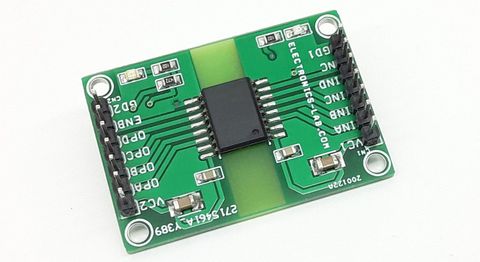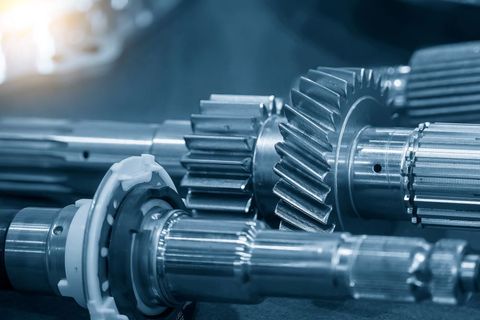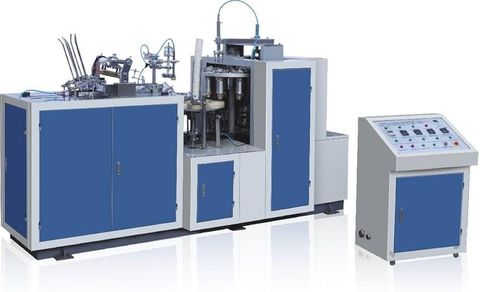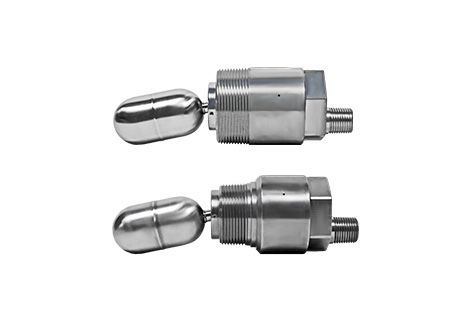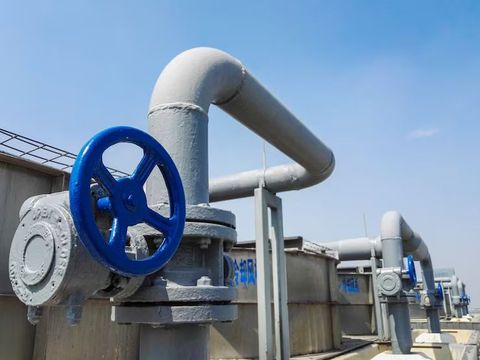Among the different types of chillers available, air-cooled and water-cooled chillers are the most widely used. These two types vary in design, efficiency, space requirements, and application. Understanding how they work, their differences, and where each is best used helps companies make informed decisions for energy efficiency, system longevity, and compliance with environmental standards.
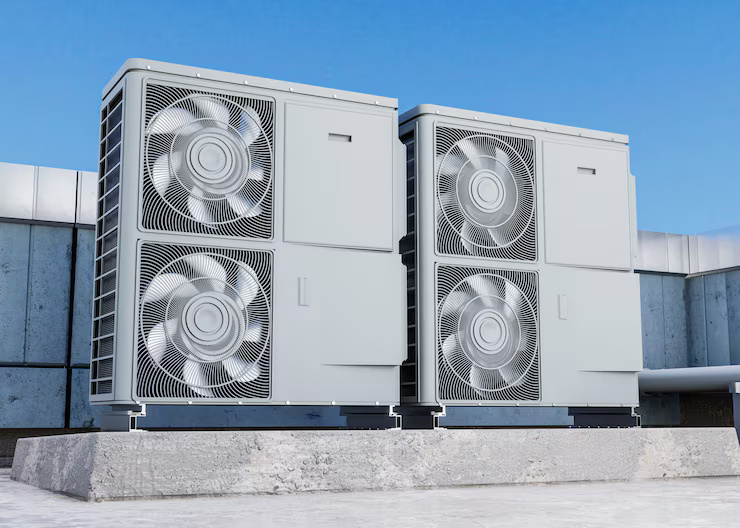
Why Industrial Cooling Systems Matter
Cooling systems are critical to both operational efficiency and safety in industrial environments. If machines or processes overheat, they can malfunction, wear out faster, or create dangerous working conditions.
Here’s why industrial cooling is more important today than ever:
Energy Management
Cooling systems can represent a significant portion of an industrial facility's energy consumption. Choosing the right chiller can reduce energy use and operating costs over time.
Product and Process Quality
In sectors like food processing, pharmaceuticals, plastics, and data centers, temperature control is directly tied to the quality and safety of the product or service.
Sustainability Goals
Modern cooling systems help industries reduce their environmental impact through improved refrigerant use, reduced emissions, and more efficient heat exchange methods.
Wide Impact
Industrial cooling systems are used by:
Manufacturing and heavy industries
Hospitals and research labs
Large commercial and office buildings
Technology and data centers
These systems solve problems related to overheating, humidity control, and energy inefficiency across diverse environments.
Recent Trends and Developments
The last year has brought several developments in industrial cooling technology, driven by both environmental regulations and the push for efficiency.
Eco-Friendly Refrigerants
More manufacturers are switching to low global warming potential (GWP) refrigerants such as R-1234ze and R-513A. These changes align with new international guidelines set by the Kigali Amendment and regional climate policies.
Smarter Systems
Industrial cooling systems are increasingly being integrated with IoT and AI-based monitoring tools. These allow facilities to track energy use, predict maintenance needs, and automatically adjust performance for optimal efficiency.
Modular and Scalable Solutions
There’s growing interest in modular chiller designs that allow companies to add capacity over time without overhauling their system. This trend supports dynamic industries that need flexibility.
Energy Regulations
Countries are tightening regulations on industrial energy use. For example, the EU Ecodesign Directive and U.S. Department of Energy efficiency standards have pushed manufacturers toward higher-performing systems.
Market Growth
Reports in 2024 show steady global growth in the chiller market. A study by MarketsandMarkets in July 2024 estimated the industrial chiller market to grow at 4.2% CAGR, reaching nearly USD 11.2 billion by 2028.
Regulatory Environment and Government Policies
Regulations and compliance play a major role in the choice and operation of cooling systems. These can include energy standards, safety certifications, environmental restrictions, and tax incentives.
Key Regulatory Factors
Refrigerant Laws
Most countries now restrict or ban refrigerants with high ozone depletion potential (ODP) or high GWP values. Compliance with refrigerant regulations is mandatory in regions like:
Europe (F-Gas Regulation)
USA (EPA’s SNAP program)
India and Southeast Asia (Montreal Protocol aligned laws)
Energy Efficiency Standards
Minimum energy performance standards (MEPS) are in place in many countries. These standards affect:
Chiller selection
Annual energy consumption reporting
System upgrades or retrofitting
Water Use Regulations
In water-scarce regions, water-cooled chillers are often regulated more heavily due to the large volume of water they consume. Local laws may enforce water recycling or treatment practices.
Building Codes
Industrial facilities must meet building and mechanical codes that apply to HVAC system installation, spacing, ventilation, and safety.
Incentives and Grants
Some governments offer incentives for installing energy-efficient systems, especially those that reduce emissions or use renewable energy sources for auxiliary power.
Tools and Resources for Planning and Management
Industrial cooling systems can be complex, but several tools and resources make selection, monitoring, and maintenance easier.
Online Calculators and Planning Tools
HVAC Load Calculator – Tools from platforms like Carrier and Trane help estimate required cooling load based on building and equipment needs.
Energy Cost Estimator (U.S. DOE) – Offers estimates on energy consumption and operational cost.
Chiller Performance Rating Tool (AHRI) – Allows users to verify certified chiller efficiency ratings.
Monitoring and Management Apps
Trane Tracer™ SC+ – For centralized control of HVAC and chiller systems.
Carrier i-Vu® – Allows remote system monitoring and scheduling.
Johnson Controls Metasys – Integrates with building management systems for real-time updates.
Maintenance and Compliance Resources
ASHRAE Guidelines – The American Society of Heating, Refrigerating and Air-Conditioning Engineers offers extensive guidelines on performance, design, and safety.
EPA GreenChill Program – U.S.-based program for compliance and best practices in refrigerant management.
CIBSE Resources (UK) – The Chartered Institution of Building Services Engineers provides compliance checklists and case studies for cooling systems.
FAQs About Air-Cooled and Water-Cooled Chillers
What is the main difference between air-cooled and water-cooled chillers?
Air-cooled chillers use ambient air to dissipate heat through condenser coils and fans, while water-cooled chillers use water from a cooling tower. Air-cooled systems are simpler to install but less efficient, while water-cooled systems offer higher efficiency and lower operating costs but need more infrastructure and water supply.
Which type of chiller is more energy-efficient?
Water-cooled chillers are generally more energy-efficient because water is a better medium for heat transfer. However, they require additional components like cooling towers and pumps, which can offset some of the efficiency gains.
Are there major maintenance differences?
Yes. Water-cooled systems require regular water treatment, pump maintenance, and cooling tower upkeep. Air-cooled systems have fewer moving parts and are easier to maintain, though they require periodic coil cleaning and airflow checks.
What factors should influence my choice?
Considerations include:
Local climate (hot, dry areas favor air-cooled systems)
Space availability
Budget and long-term energy goals
Water access and regulations
Cooling load size
Can chillers operate in extreme weather conditions?
Modern chillers are designed to operate in various conditions, but performance can be affected. Air-cooled systems might struggle in high ambient temperatures, while water-cooled systems may face operational limits if cooling water becomes too warm or scarce
Conclusion
Understanding the difference between air-cooled and water-cooled industrial chillers is essential for selecting the right cooling solution for your facility. Each has advantages and trade-offs that relate to energy use, maintenance, space, and long-term costs.
The shift toward eco-friendly technologies, tighter energy regulations, and digital monitoring tools continues to shape the industry. By using available resources, staying informed on regulations, and evaluating operational needs carefully, industries can make better decisions about cooling systems.
Choosing the right system is not only a technical decision but also a strategic one that affects environmental impact, operational efficiency, and long-term sustainability.

